BY JOHN ANDERSON
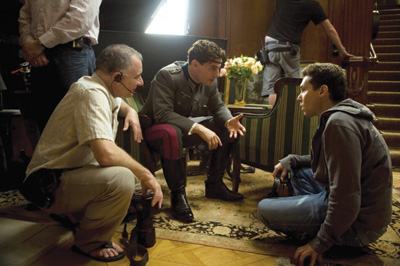
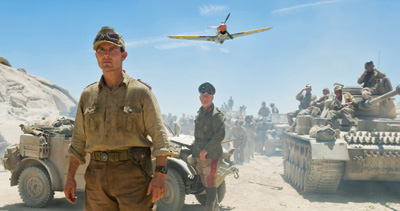 PERFECT MATCH: (top) Bryan Singer (right) and his longtime DP Newton Thomas
PERFECT MATCH: (top) Bryan Singer (right) and his longtime DP Newton Thomas
Sigel have done so many films together, including (above) Valkyrie with Tom
Cruise, that their communication has almost become non-verbal. (Credits: MGM)
When one looks at the history of cinema, says The Dark Knight director Christopher Nolan, the director-cinematographer dynamic is the key relationship, "as much as the director and the lead actor." It's the defining factor, he says, not only for how a film looks but "how it will be perceived as having been directed."
The relationship between the director and DP is like an 18th-century ship captain and his navigator. Or Mick Jagger and Keith Richards. But it hasn't always been this way. Even during the Golden Age of Hollywood, longstanding relationships between directors and DPs did not occur as often as one might imagine. There were, of course, exceptions: Alfred Hitchcock used Robert Burks throughout the '50s and into the '60s, whether it was for the black-and-white Strangers on a Train or the glossy, Technicolor Vertigo. And there were other cases, such as Ingmar Bergman and Sven Nykvist, where a director and DP became almost synonymous.
But today, with directors making fewer films and their visual styles often becoming more pronounced and personal, a number of very solid, productive and signature partnerships have formed. We caught up with a few of those teams to see what makes for a successful collaboration.
Bryan Singer and his director of photography Newton Thomas Sigel have made so many movies together, including X-Men, The Usual Suspects and Superman Returns, that their communication has gone nonverbal. "Very often," Singer says, "I can tell him what I want with hand signals—I could show it to you, but it would look pretty funny. I move my hands around and it becomes almost telepathic."
Among the more long-lasting director/DP teams, Singer and Sigel have overcome the obstacles—taste, logistics, and ego—that can plague such a close collaboration. And despite the above-mentioned sign language, they do occasionally have to talk.
"On Valkyrie," Singer says, "Thomas and I were on one of our scouts in Germany while the rest of the crew was moving to the next location and I convinced him to go to a Subway for lunch. Tom was very concerned that the crew would be waiting, but I said, 'Let's take 20 minutes and talk, just the two of us.'"
What they realized over their hero sandwiches was that the look of the historical drama, which starred Tom Cruise as a would-be Hitler assassin, would have to change in the moment just before a bomb under Der Führer's table goes off and seconds after. "In that Subway shop, the two of us made the decision that from the time the bomb goes off, the camera would no longer be mounted on a device, by a tripod or crane or Steadicam. But it wouldn't be handheld either, it wouldn't be like The Bourne Supremacy movies. It would be what we called 'man-held,' resting in a lap or on a shoulder. If the camera went up on a crane someone would have to be holding it. And the goal would be to keep it as steady as possible." Nonetheless, Singer says, it would have an almost imperceptible movement and a sense of agitation.
"I think that it's just common sense when a cinematographer and a director make a film together and the experience is positive for both of them, and they've fueled each other's creativity and perhaps made each other a little better, it's something you want to continue," Sigel says. "I'm surprised there aren't more people who find these symbiotic relationships with each other."
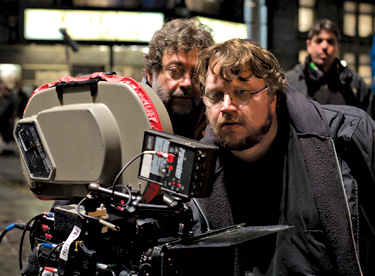
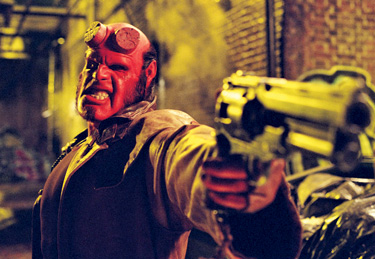 TWO HEADS: Director Guillermo del Toro (right) decides on the color palette
TWO HEADS: Director Guillermo del Toro (right) decides on the color palette
for a film and with Guillermo Navarro, his collaborator of 20 years, they
solve the logistics of the shoot, as they did on Hellboy (below).
(Credits: (top) Columbia Pictures; (above) Universal Pictures)
Those relationships—sometimes planned, sometimes serendipitous—can develop in various ways. Singer interviewed Sigel four times before hiring him to direct The Usual Suspects. ("By the fourth interview I think he was kind of annoyed," Singer says.) But when director Guillermo del Toro joined forces with Guillermo Navarro, it was the Mexican cinematographer—who has since shot Cronos, The Devil's Backbone, Pan's Labyrinth and two Hellboys for Del Toro—who was better known.
"We started on Cronos, but actually it was a little earlier than that," recalls Del Toro. "They needed someone to storyboard and do camera placements for a little Mexican movie you've never heard of, and I volunteered to do the job for free. I wanted to work with Guillermo; he was famous for being a genius with light. And also famous for being ill-tempered."
Knowing this, Del Toro nevertheless exercised the "impudence of youth," correcting the older DP on a shot the younger man had set up. "He looked at me like he wanted to kill me. 'Okay, kid,' he said. 'Show me.' So I went around to the front of the camera and used my hand to show him, 'This is the top of your frame, right? And this is the bottom of your frame, right?' and we've been friends ever since."
Navarro laughs at the memory. "He comes to me and tells me what to do and I'm saying, 'Who's this guy? You don't know what a lens is and you're telling me what to do?' It was a funny situation."
"We've been together 20 years, since 1987," adds Del Toro. "I don't think we've ever had an argument."
When pressed, however, Del Toro remembers one time they disagreed. "We disagreed once on Cronos. I said, 'I think the fill light on set is a little too bright.' And he said, 'Here's what we're going to do: We'll shoot it the way I lit it, then we'll shoot it the way you want to light it. And then we'll see.' And, of course, he was right. I think his light is beautiful. I never questioned him again."
Del Toro says that what he and Navarro have is total trust—an essential quality echoed by other director-DP teams.
"Every new relationship is guarded," says Wally Pfister, who has worked with director Nolan on five films in the last nine years, including Memento, Batman Begins and The Dark Knight. "At the beginning, you're trying to learn how they work and then eventually it becomes more collaborative as you understand how they think. And I try to help other people out on set who perhaps don't know him as well as I do."
"A lot of the trust centers on time allocation," explains Nolan. "The advantage of working with the same people on film after film is about how to best use time on the set. But I trust Wally to tell me when he needs a certain amount of time to do something, and he gets it."
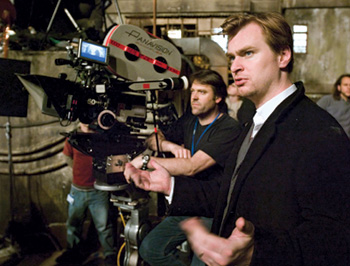
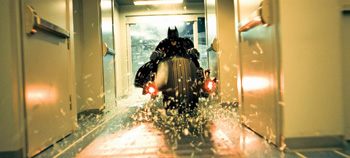 DYNAMIC DUO: (top) Christopher Nolan (right), shooting Batman Begins
DYNAMIC DUO: (top) Christopher Nolan (right), shooting Batman Begins
with Wally Pfister, says the relationship with the DP, as much as with the
actors, is the key relationship on a film. Nolan has shot five films with
Pfister, including Dark Knight (above). (Credits: Warner Bros.)
Familiarity between director and DP can mean huge time savings, Sigel agrees. "When you've worked with somebody the amount of time I've worked with Bryan, I know he's not going to want to do this or that so I don't necessarily have to even ask the question," he says. "You also find there's a rhythm when you work together that much. You know how much to expect from him as far as setting up a shot or not; you have a whole process you've established from film to film that you don't need to re-establish every time because you have your working methodology in place."
Singer admits that sometimes he and Sigel will "bicker" about "too much tinkering with the image. But what he does is very interesting," the director says. "He takes photographs of everything he's shot with a digital still camera. Then on his own time he pre-times the image and gives it the quality he's going to look for in the digital intermediate. He can give that information to a colorist, who then gives the dailies a tweak right there on the set. On Superman Returns, which was the Genesis camera, or movies like Valkyrie or X-Men, where it's film before it goes into the digital realm, the colorist already has Tom's notes from the set. So by the time I'm looking at dailies I'm seeing some of the work already done. And that's nice. You get a better shot of what the film looks like."
Getting the right look can occur at various stages of the process. "Chris really started to like shooting at magic hour," Pfister says. ("They call it 'magic hour,'" quips Nolan. "It's more like magic 15 minutes.") "He liked the look and while we were shooting The Prestige, he said, 'Let me know if there's an opportunity to shoot in that light.' We were five days ahead of schedule and were supposed to be doing a huge shoot with night exteriors, a big night shoot on the backlot at Universal, working till 1 a.m."
Knowing Nolan hated working at night and loved shooting at twilight, Pfister hatched an idea. "I said to him, 'Look, what if we shoot at magic hour? If you feel confident we can get the wide shot and the master in, I feel like I can provide the coverage on the close-ups and we can be out of here early.' His eyes popped wide open." They were finished by 10 p.m.
"The director is king," says Pfister, regarding the hierarchy on the set. "I don't execute anything without checking with him. But of course, a great leader is always going to listen to the expertise of those around him."
"The ultimate responsibility is the director's," agrees Nolan, "but you're a fool not to take good advice."
To no one's surprise, the most skilled cinematographers expect their relationship with a director to be one of shared creative ideas and a common pursuit of excellence. "I refuse to see my job as a plumber, to fix things," says Navarro. "Unfortunately, a lot of filmmakers think that's the role of the cinematographer. You're there to fix problems. We show up with our tool belt and start making repairs."
Del Toro respects the job Navarro is there to do, but it's mutual. "When I lay out a shot I never hear a peep out of him. And when he lights the set, he gets the same out of me."
But as Sigel points out, getting too emotionally attached to one's ideas can only lead to frustration for the DP. "When we were doing Valkyrie I did some camera tests," Sigel says. "There were some ideas that intrigued Bryan and he wanted to see a test of it. It had to do with the choice of film stock and lenses and giving the film a certain look. I did the test for him and when he saw it on a big screen, he said, 'It looks like a European movie.' We were sitting there in Germany, and for a second I thought that was a compliment. Then I realized 'No, that's bad, that means it looks like an art movie.' So that idea was history."
The best time to determine what the relationship will eventually be is during, well, "the dating stage." Singer and Sigel started circling each other before The Usual Suspects in 1995, the follow-up to Singer's Sundance-winning debut Public Access, which is the only Singer feature Sigel hasn't shot.
"I liked the reel he had cut," Singer says. "But what I was doing was interviewing for personality. I was interviewing not just for The Usual Suspects but the guy who I would work with on all my films. Which is why I was having him come back for multiple interviews. I wasn't just gauging his work; I was determining whether this was someone I could get along with for longer than 35 days, or whatever it was."
What couldn't have been foreseen is the way technology has cut in on the dance of the director and his/her DP. "It doesn't change the chemistry," says Sigel, "but it certainly changes the things we have to do. Even to decide, 'Are you going to shoot film or digital?' That was a choice we never had to make before. And I think it depends, because every film is different. I don't think we're at a stage yet with the technology where you say, 'I shoot film' or 'I shoot digital.' Or even 2-D or 3-D. Every project has its own demands."
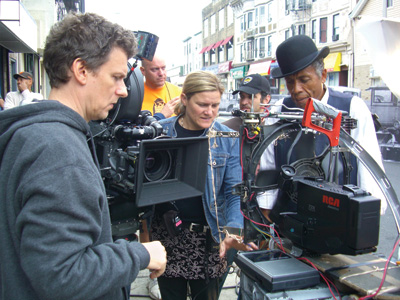
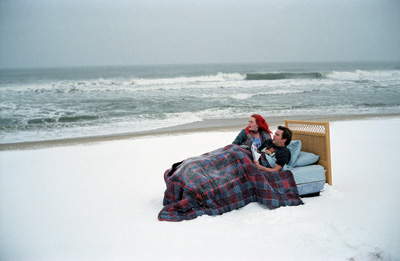 LIKEMINDS: (top) Michel Gondry and Ellen Kuras on the set of Be Kind Rewind. Working
LIKEMINDS: (top) Michel Gondry and Ellen Kuras on the set of Be Kind Rewind. Working
together they came up with a unique look for Eternal Sunshine of the Spotless Mind (above)
that emphasized the human elements of the story. (Credits: Kevin Devonish; Focus Features)
Michel Gondry (Eternal Sunshine of the Spotless Mind, Be Kind Rewind), who operates outside the studio system and usually with award-wining DP Ellen Kuras, says the choice of medium is generally a collaborative decision for what is best for the project. And like most of the directors, he hasn't had HD forced upon him—not that he's averse to it. "On some projects and where appropriate, we've shot digital formats," says Gondry, even though Kuras is a master of shooting in 35 mm. Initially she had some questions about working with Gondry.
"I had seen Michel's commercial work," she says. "And because so much of it is about time and space and not specifically visual, I remember thinking, 'Oh my God, he really needs help in the visual department.'"
But she liked his ideas. "I've always been interested in the illusions, the in-camera effects, in a homegrown way, and he's very interested in things being organic and not processed later on, in the effects department.
"So I went into the meeting [for Eternal Sunshine] saying, 'I'm really interested in meeting this person and talking about ideas, but if he doesn't care what it looks like, if it would be as okay for him to shoot the whole thing in VHS as it would in 35, I was wondering if I wanted to do the film or not. Because so much of what I do is about cinematography, as well as the visual aspects of the story."
In the film, the character played by Kate Winslet evaporates from the life of the character played by Jim Carrey. So Gondry showed her a photograph. "It was actually a photograph of a photograph that was cracked and peeling," Kuras recalls. "Then he showed me a photograph of paint peeling and says, 'This is what I'm thinking about in terms of how I want Kate to disappear. This is one of the things I had in mind.'"
"It totally struck home with me," Kuras says. "I could see painting, liquid emulsions, glass and having it peel off and how to get that onto motion picture. We were talking about mirrors and glass and at that point I think we both knew we were excited to work together, that there was a whole bunch of ideas we wanted to explore together."
"When we first met, I said, 'How would you shoot this, how would you shoot that?'" Gondry says of Kuras. "I really put her on the spot. But she told me things I wanted to hear." He didn't want someone who would resort to more artificial means to achieve the very natural, human characteristics he wanted for his story. "We talked about the film, which was a very intimate statement about human nature, and we agreed that we wanted life to breathe through it. And she had very specific ideas about how to do that."
Kuras agrees that communication and expertise are important to a successful collaboration, but says humor is important, too. "On Eternal Sunshine," she says, "the AD, Michael Hausman, who's always teasing everybody, started calling Michel 'the Frenchie.' 'Bring the Frenchie out,' he'd say, and we were aghast—he was slurring Michel's Frenchhood!"
"But Michel started laughing," Kuras remembers, "so we all laughed. Then it became 'French Toast!' So we started laughing about that. And this was at the time when Bush absurdly imposed that stupid ban on calling things 'French,' so Michael started saying, 'Where's Freedom Toast?' And Michel comes out and said, 'Michael, I am not Freedom Toast. I am French Toast!'"
Personality no doubt affects the working relationship between the director and the DP. But so does an understanding of the delineation of power. In preproduction, Del Toro says, he lays out the color palette, the visual vocabulary with which they're going to work, and the camera moves and there's no questions about any of it. ("That's an open-and-shut case," he says.) Then, he and Navarro work together in solving the logistics about what has to move—lights and other equipment, walls, floors, pieces of construction.
"His experience is indispensable," acknowledges Del Toro. "I look at a set and see the beauty, the artistry, the aesthetics, the poetry; he looks at it and thinks, 'How are we going to light this? Is the distance between walls adequate? How do we make it a working environment?' He once said to a production designer, 'If you don't agree with me about how to light the set, you can charge people money and let them tour it."
Del Toro adds, "I might have come up with a blue scheme for a particular scene and Guillermo will say, 'How will that affect the skin tone of the actors?' Some of my actors have weird skin tones. I come in with a fully formed concept, but we sit and talk about it for two or three days, reading the screenplay, scene by scene, and we all voice our artistic and logistical concerns."
Del Toro says he used to look through the lens, ("when I was thinner," he jokes) "but we have video monitors for that. Also I know his cameras. Jacinta, Fortunata—each one has a woman's name and each one has its own personality. In all seriousness, we are like brothers. Sometimes he's the older brother, sometimes I am. Usually I am the younger brother but every once in awhile he needs an older brother. There are certain collaborators you best not even imagine not having on your set. Guillermo is one."
But keeping a team together is sometimes as much about scheduling and practical elements as anything artistic. "I won't make 50 films over the course of my career," Nolan says, comparing his own output to that of a '40s studio director. "We make fewer films today, and farther between, and my last two features were two-year projects. As a consequence, it's harder to get schedules to coincide. That's life. But with Wally, he enjoys doing commercials, so that's what he's done between my features, and it's worked out well."
And when it works, it's a gratifying creative experience for both members of the team. "The director is the one who's bringing the project to the table," says Kuras, "but as a DP I feel myself very much involved in the creation of that project and helping the director to shape it in many ways. For a lot of people, their egos get in the way and they don't try to understand where the other person is coming from. You have to be open enough to try different ideas."